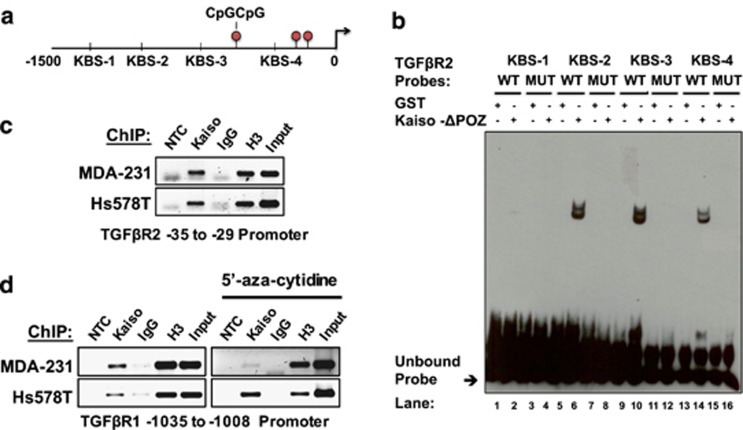Figure 5.
Kaiso associates with the endogenous TGFβR1 and TGFβR2 promoter in breast cancer cell lines. (a) Schematic illustration of the TGFβR2 promoter highlighting multiple KBS. Four double-stranded oligonucleotides were designed to contain core KBS from different regions of the promoter and utilized in electrophoretic mobility shift assay (EMSA) to determine Kaiso binding. (b) EMSA shows that Kaiso binds the proximal TGFβR2 promoter in a KBS-dependent manner (lanes 6, 10 and 14). This interaction was abolished (lanes 8, 12 and 16) upon introduction of a point mutation in the core KBS sequence of these probes or competition with the cold unlabeled wild-type probe. (c) ChIP of MDA-231 and Hs578T chromatin revealed that Kaiso binds the TGFβR2 promoter endogenously. (d) ChIP experiments of MDA-231 and Hs578T chromatin shows that Kaiso also interacts with the TGFβR1 promoter endogenously even after 5′-aza-cytidine treatment. Representative images are shown. All experiments were conducted in triplicate. H3, Histone 3 positive control; Input, 10% input. MUT, mutated; NTC, no template control; WT, wild type.

